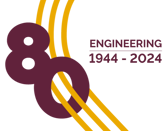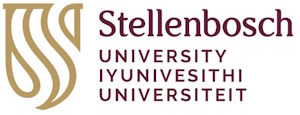
[Article by Nane Zietsman and Magriet de Villiers]
The COVID-19 restrictions have been a challenge for students and faculty alike. To ensure the safe return of students for the 2021 academic year, Stellenbosch University launched the Extended Learning Spaces (ELS) project in November last year. The project intended to address the challenge of remote learning due to the reduced capacity of lecture halls. The Faculty of Engineering welcomed the ELS project in some of its key lecture venues to assist in the current hybrid learning model.
The ELS project aims to provide all schedulable lecture venues with audio-visual equipment and systems. This will enable lecturers to stream their classes while teaching in a lecture hall. Lecturers can directly communicate with those students who are not physically in the venues, providing an interactive learning practice comparable to the in-class experience. In their continued commitment to support remote learning, Stellenbosch University fast-tracked installation of equipment in 16 schedulable venues within the Faculty of Engineering.
The timely launch of the ELS project was not only an emergency response but part of a campaign that has been in discussion over the last six years. The SU Learning Spaces workgroup bolstered the design of an audio-visual classroom system to align the university’s offerings with the Teaching and Learning Policy (2018). This policy aims to provide a better learning experience to students and reach new student markets. The outcome has been an accelerated implementation of the Teaching and Learning Policy, leveraging the experience gained with online teaching during 2020.
The implementation of the ELS project consists of several role players, each responsible for a different element of the design execution. Facilities Management leads the installation of hardware and systems while IT, in conjunction with the Division for Learning and Teaching Enhancement, offers stakeholders training and support. The implementation of hardware and systems proves to be the most tedious part of the project, with four different designs outlined to provide for different lecture venue sizes and requirements. To assist this process, the ELS system is pre-built in a 19” rack, which allows for faster installation. The rack contains a video controller, video switch, video recorder, audio amplifier and controller, and network switch. It also includes an Uninterrupted Power Supply (UPS) that activates during power outages. Alongside the rack is a monitor stand which contains a 24” touch monitor with annotation capability, a video and audio control touch panel, Microsoft Teams Room Device, and a monitor to show the remote participants.
Identified faculty staff received functional orientation and training for the use of ELS equipment. Microsoft Teams is at the core of the ELS system as interactive audio-visual software. The lecturer can control which images are displayed on the classroom projectors, which are simultaneously visible to the online students. The lecturer can also decide to record the lecture via Teams to keep it as a backup for future use and/or upload it to their SUNLearn module.
The Faculty of Engineering implemented a hybrid learning model in 2020, providing for remote and on-campus learning. Students and staff showed great resilience in adapting to the new normal, and the ELS project played an essential part in ensuring continuous learning throughout the varying restriction levels. Although ELS systems offer a close alternative to in-class teaching, lecturers are looking forward to seeing their students in person again. “After 2020, I am very eager to see my students again. Thanks to the digital age we live in, students can communicate via various channels, like WhatsApp groups. Unfortunately, lecturers are often absent on these platforms. I want my students to know that I am here and by their side. Being able to teach in person and connect with ELS students who are at home, is gratifying,” says Prof. Annie Bekker.
Prof. Bekker further shares her experience of adapting to the ELS platform: “I was pleasantly surprised by how easy it is to switch between the different media with the ELS system. The students in class help me a lot, especially by repeating the questions their fellow students ask in the online chat. This comes to show that hybrid learning is a team effort and everyone in the Faculty stepped up and pulled their weight.”
Prof. Celeste Viljoen, Vice-Dean – Teaching and Quality Assurance, asserts this notion: “Thanks to these systems and the ongoing Faculty refurbishment project, our lecture venues are state-of-the-art. The Faculty is looking forward to utilising the installed technology and exploring the possibilities that it presents. Still, we are mindful that students benefit substantially from in-class experiences, and we remain a residential university that intends to continue offering high-quality in-person teaching and learning opportunities.”
The Faculty would like to commend our staff and students for their willingness to adapt to a hybrid learning module. The ongoing efforts from the university staff and students do not go unnoticed. We also acknowledge the funding the University made available for this project and the professional implementation thereof by our colleagues in Facilities Management.
We are looking forward to welcoming back our entire student body. For now, we urge you to make use of the various resources the Faculty offers in its hybrid learning module and remember to stay safe.
Photographs: Mr Ulrich Smith, designated ELS trainer at the Faculty of Engineering, configures the system for a scheduled training session.



